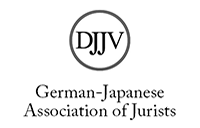Die Reform des japanischen Bürgschaftsrechts in rechtsvergleichender Sicht
Zum Schutz der Bürgschaften natürlicher Personen für Unternehmensschulden
Abstract
The topic of this comparative law article is surety law. The focus is on the protection of natural persons who act as guarantors for corporate debts and who often misjudge the risks incurred or who assume the surety due to an emotional attachment to the principal debtor. As part of the law of obligations reform, which came into force in 2020, new provisions protecting such guarantors were introduced into the Japanese Civil Code (Art. 465-6 et seq. CC). These aim to protect the guarantor through formal requirements and procedural regulations. In addition, attempts have been made to counteract the remaining problems by means of soft law and the introduction of administrative law regulations. The article presents this model of Japanese law and contrasts it with the German approach, on the one hand, and the French approach on the other.
From a legal perspective at the level of protecting natural persons who guarantee corporate debts (i.e., on the micro level), Japanese and German law agree on their starting point. Both laws attach great importance to private autonomy and recognize a need for protection only where the guarantor's private autonomy is violated by the creditor or where the creditor takes advantage of a defect in terms of consent or intent on the part of the guarantor. By contrast, French law provides for significantly more far-reaching interventions in private autonomy by imposing duties upon the creditor to warn the guarantor and by requiring proportionality as between the liability assumed and the income and assets of the guarantor. While German law seeks to protect a guarantor through a written form requirement and through a strictly limited review of the agreement in terms of its substance, Japanese law has introduced a procedural regulation which, through the involvement of a notary, intends to prevent a guarantor from assuming a surety without being sufficiently aware of the risks or when in a position of emotional attachment which makes it difficult to refrain from undertaking the surety. As a manager or a majority shareholder of the principal debtor are not in need of protection, they are excluded from the regulation’s scope of application.
From an economic policy perspective of macroeconomic efficiency (i.e., on the macro level), however, the Japanese model is closer to French law. While German law is seemingly premised on the belief that the surety system – and its maintenance – are essential so as to enable companies to borrow, French law is based on the belief that the existence of a surety can allow companies to continue to exist until their final collapse and thus prevent entrepreneurs from setting up new, potentially economically significant companies, thereby harming macroeconomic efficiency. Accordingly, French law provides for scrutiny of the content not only of sureties by family members or other natural third parties, but also for sureties made by managers of the principal debtor. Japanese law also establishes regulations on the assumption of sureties by entrepreneurs, though outside of the Civil Code. However, while French law provides for judicial review of the content of a surety, Japanese law is characterized by its dual approach of generally permitting the assumption of sureties by entrepreneurs but simultaneously attempting to limit their use through soft law and administrative regulations. The aim of this approach is not to exclude or restrict private autonomy but to steer it in a desirable direction. This can be seen as an ‘alternative’ regulatory model that, like the German model, supports private autonomy. In practice, the new Japanese rules seem to have achieved their aims reasonably well so far.






